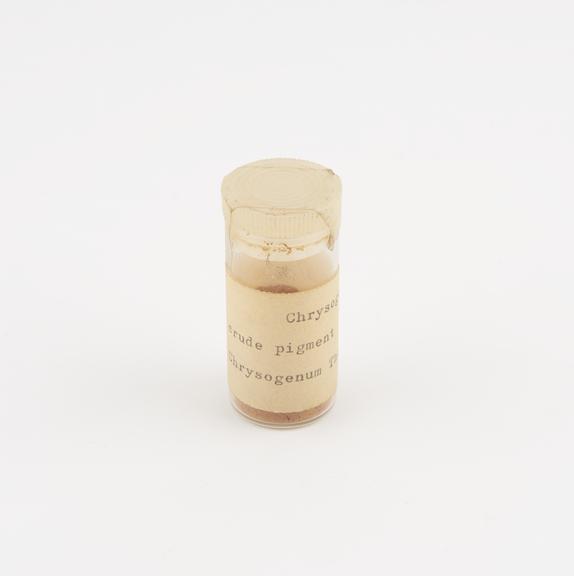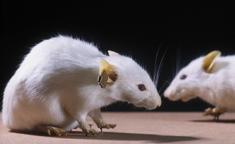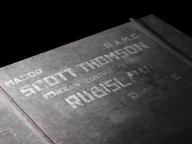

Glass phial containing extract from Penicillium chrysogenum
- Made:
- 03-10-1930 in London

Glass phial containing crude pigment extracted from Penicillium chrysogenum by Professor Harold Raistrick at the London School of Hygiene and Tropical Medicine in 1930
This extract was one of several prepared by Professor Harold Raistick (1890-1971) in the 1930s while he was attempting, at the request of Professor Alexander Fleming, to isolate and purify penicillin. In 1928, Scottish biochemist Fleming had accidentally discovered that mould from penicillin had antibacterial properties. Raistrick’s work showed that penicillin could be grown on a synthetic medium and could be extracted. He sent a sample to his friend Charles Thom who clarified the name as Penicillium notatum.
Raistick was researching the properties of Penicillium chrysogenum. With colleagues Percival Clutterbuck and Reginald Lovell, they managed to isolate this yellow chrysogenin dye but not the active property that would become penicillin, the medicine. Raistrick did not continue his research into penicillin as it was a very difficult substance to control and keep stable and such many did not believe it could be turned into a useable medicine. It would take until the early 1940s until penicillin was usable as an antibacterial medicine. Much of this work was due to the work of the Oxford team including Howard Florey, Ernst Chain and Norman Heatley and collaboration with American and British manufacturers.
Details
- Category:
- Biotechnology
- Object Number:
- 2003-2
- Materials:
- phial: glass, plastic, paper and contents: crude pigment from p. chrysogenum
- Measurements:
-
overall: 60 x 25 mm
- type:
- penicillin
- credit:
- Stewart, Gordon, Professor




